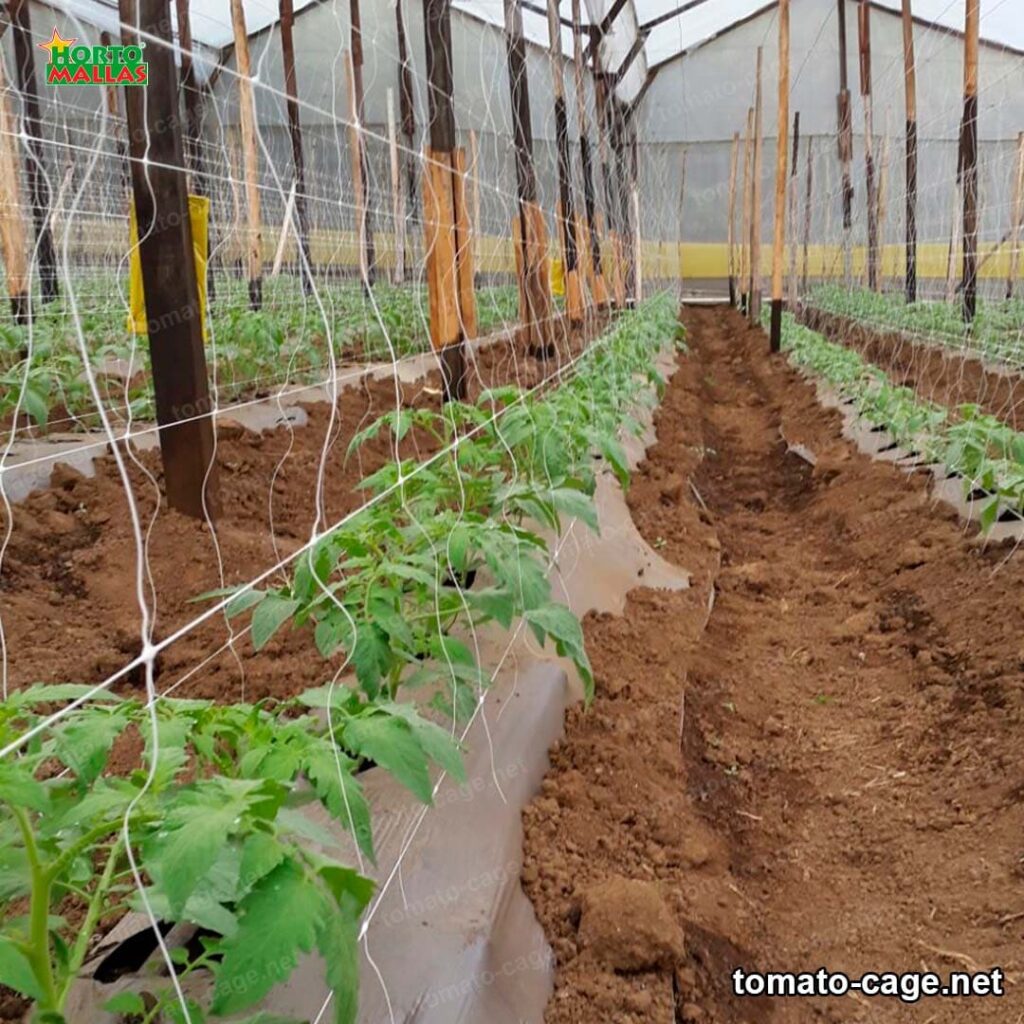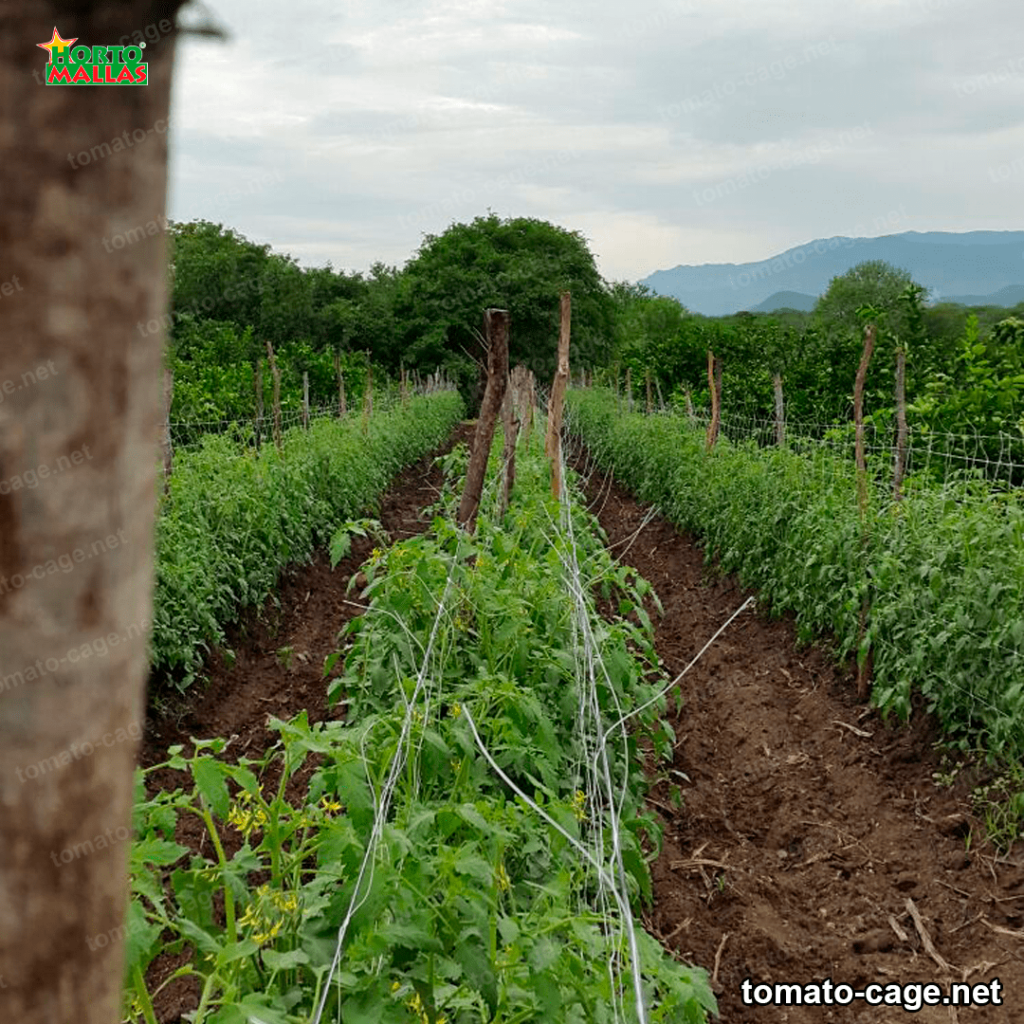The cleanliness of a tomato growing cage is of utmost importance for best results.
Thorough cleaning plays an important role in preventing diseases that can affect the tomato crop, allowing for better pest control.
Proper fertilizer, irrigation and light are all important factors in growing quality tomatoes, but for good success be sure to keep the cage clean. A well-maintained tomato growing cage allows growers to achieve higher and better yields. Proper cage cleaning decreases the risk of plant diseases, pest infestations and alleviates the problems of weakened plants. Cleaning also improves the overall appearance of the cage and helps plants develop fully.
Cage cleaning begins before planting tomatoes. Mowing and cleaning the grass near the cage, as well as removing any decayed material in the cage. Then, be sure to remove all fallen leaves, dead vegetation and calcium nitrate before planting tomatoes. This helps prevent soil diseases common to planting tomatoes.
Once the tomatoes have been planted, it is important to maintain a clean cage. This involves removing and replacing manure very frequently, as well as removing weeds near the cage. Weeds harbor insects and other unwanted animals, such as rats, which can lead to plant diseases and pests. Pour manure for the benefit of the plant and avoid poor decisions such as excessive thinning. Manure should not be applied for more than twice per season, combined with compost and thinning. Next, an important step in keeping a cage clean is to avoid water accumulation in the bottom of the cage. Excess water can lead to poor decomposition of nutrients in the soil. It is important for growers to ensure adequate drainage within the confines of the cage to minimize the risk of water accumulation leading to disease.

Other methods play an important role in keeping a tomato growing cage clean.
These include cleaning for pests, pest control through the use of traps, removal of damaged fruit, pruning and disposal of food debris. It is also advisable to remove plant and animal debris that may attract natural enemies of tomatoes, such as grubs, beetles, spiders and bees.
After each harvest, growers should clean the cage. This means removing the early roots, properly pruning the foliage, removing unwanted fruit, disposing of food debris, and removing brush, trash and dirt. It can also be helpful to plow the cage to improve its structure and allow air to circulate freely to help maintain the proper humidity level. This, in addition to increasing soil quality, helps eliminate harmful microbes.
Each tomato growing cage should be cleaned on a regular basis to improve tomato health and facilitate nutrient uptake. This cleaning process should be carried out regularly before planting, during cultivation and after harvest to ensure healthy tomato growth. A clean tomato growing cage will contribute to higher quality fruit and higher crop yields that will undoubtedly lead to greater profit for growers.
Large-scale tomato production is a lucrative commercial activity. The most convenient form of tomato production is through greenhouse farming, in which cages are used for cultivation. To obtain maximum tomato production from the growing cage, careful maintenance of the cage must be carried out to ensure that tomato growth is not restricted by the environment.
For the maintenance of a growing cage, cleanliness is imperative to ensure that the microclimate inside the cage is ideal for tomato growth. The cage should be cleaned frequently to remove dust, leaves and any other foreign material. This will keep the air inside the cage free of bacteria and foreign particles.
Lighting is also essential. Direct sunlight is one of the major contributors to optimal growth.
Oscillating sun screens can be used to keep the air inside the cage cool and protect the tomatoes from direct sunlight damage. It is also important to ensure that sunlight penetrates the cage at the correct intensity.
Another critical aspect of tomato growing cage maintenance is to ensure that the soil substrates are adequate. The substrate must be composed of an adequate mix of nutrients and moisture for the tomatoes to thrive. Sometimes, it is necessary to replace the substrate with clean substrate to ensure proper fertility. Watering is essential for growing tomatoes. This involves, for example, making sure that the amount of water for irrigation is adequate for tomatoes. Overwatering can lead to mold or parasites in the cage, while underwatering can damage tomato growth. It is best to have a soil moisture measuring device on hand to ensure that the amount of water for irrigation is adequate.
Proper maintenance of a tomato growing cage is essential for the production of high quality tomatoes. This includes cleanliness, lighting, proper soil substrate and moderate watering. If a proper maintenance program is followed, the tomato grower can expect to obtain excellent yields from the tomatoes grown in the cage.
What is the process to follow to keep a tomato growing cage clean?
Maintaining a clean tomato growing cage is an important step in growing a healthy crop and preventing the spread of mold and plant diseases. Proper cleaning practices help growers, both commercial and home growers, maximize tomato production profitably.

Here are some steps to follow to keep your tomato cage clean.
- Be sure to clean the grower’s cage before planting tomatoes. This involves removing all existing diseases and organic debris before planting. Use a solution of warm water with a little detergent to remove any traces of mold or other organic materials. Rinse and wipe down all items in the cage to ensure that no debris remains.
- It is important to make sure the plants are properly cared for to prevent disease and pests. This means making sure to water regularly, but not excessively. It is also important to remove any traces of weeds to prevent them from becoming a home for insects and tomato pests.
- When harvest season arrives, be sure to remove all plants and their dead parts to prevent the spread of any diseases, such as mildew. Clean the cage with a disinfectant solution and rinse. Buried surfaces should be worked to destroy any remaining pathogens.
- After harvest, clean all debris from the cage with a disinfectant solution and rinse. Clean all garden areas in the vicinity to avoid any possible disease passage between seasons. Check surrounding fencing to make sure there are no gaps or cracks that would allow insects to enter.
- It is essential to ensure that any garden tools are clean and disinfected to prevent the spread of disease between growing seasons. Clean and disinfect tools that have been used in the garden before putting them away again. This will minimize the risk of disease spread between tomatoes.
- Finally, before the next growing season, conduct a thorough examination of the cage to check for any damage or problems. Check the posts for wear and tear or damage.